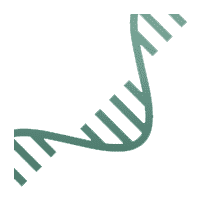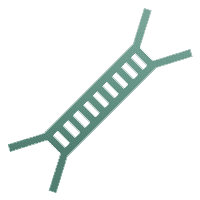miRNA (microRNA) Sequencing
Overview
Features
Workflow & Data Analysis
Requirements
Demo
FAQ
Resources
Inquiry
miRNA sequencing, based on next-generation sequencing (NGS), can comprehensively profile miRNA sequences, either known or novel miRNAs. Our miRNA sequencing detects novel miRNAs as well as isomiR, enabling you to see precisely which miRNA sequences are expressed in your samples and uncover the importance of these small regulatory elements linked to a wide range of biological functions.
Overview
The miRNAs, 19 to 25 nucleotides long, are a class of small non-coding RNAs, processed from hairpin precursors. miRNA play a key role for the translation efficiency and the stability of their target mRNAs. The miRNAs can control the expression of up to several hundreds of genes by guiding the RNA-induced silencing complex (RISC) to complementary sites in the 3′UTRs of the target mRNAs. This regulationary mechanism underlying gene expression is involved in almost all processes of cell biology and development, such as cell differentiation and apoptosis, the clearance of maternally deposited transcripts, morphogenesis, and organogenesis.
miRNA sequencing is a technique that examines and quantity and sequences of miRNA molecules in a given sample using NGS and size selection. miRNA sequencing experiments contribute to our understanding of cell biology essential developmental processes by detect both known and novel miRNAs, and how RNA molecules affect gene regulation, thus influencing disease development and phenotypic variation and accelerating the discovery of diagnostic or prognostic biomarkers, as well as the development of miRNA-targeting drugs.
Features
| High Sensitivity | High Precision | Transcriptome Wide | One-Stop Solution |
|---|
| Theoretically detect miRNA at levels down to one copy. | Can detect single base change in miRNA. | Profile all miRNAs, either known or unknown, in your biological sample. | From sample QC, library construction, to sequencing and data analysis. |
Project Workflow

1. Sample Preparation
Quality assessment and quantification by locked nucleic acid (LNA) qPCR.

2. Library Preparation
RNA Selection – Size Fractionation; 18~40 bp insert cDNA library; Optimized for biofluids with limited RNA content.

3. Sequencing
50 SE / 75 SE; 7-10 Million Reads.

4. Data Analysis
Data quality is measured, visualize and preprocess results, and perform custom bioinformatics analysis.
Our Solutions for Comprehensive microRNA Research
CD Genomics employs state-of-the-art NGS platforms to deliver excellent microRNA research services, including microRNA target prediction and microRNA expression analysis.
We provide RNA sequencing and microRNA sequencing to predict miRNA targets. In addition to in silicon prediction, we also measure the correlation of miRNAs and corresponding protein levels to accurately determine miRNA targets.
Learn More
We provide NGS approaches coupled with bioinformatics analysis for miRNA expression analysis and differential expression analysis, contributing to understanding the dynamic level and complicated functions of miRNAs.
Learn More
By integrating miRNA and mRNA analysis, we offer a holistic view of gene regulation networks, enabling the identification of key regulatory interactions and potential therapeutic targets.
Learn More
Our exosome microRNA sequencing examines monitors global miRNA expression at an affordable price, enabling the identification of biomarkers associated with diseases like cancer.
Learn More
Circulating miRNAs play a crucial role in intercellular communication. We offer a comprehensive range of untargeted circulating miRNA detection and analysis services based on sRNA sequencing and data analysis platforms.
Learn More
While bioinformatics predictions can highlight potential miRNA target genes, they often yield high false positives. In contrast, degradome sequencing directly screens miRNA cleavage sites, providing a more reliable method to uncover miRNA-target gene interactions, study miRNA processing, self-regulation, and identify novel miRNAs and ta-siRNAs.
Learn More
Bioinformatics Analysis Pipeline
In-depth data analysis:
- Biostatistical analysis –transcript copy number comparisons, expression analysis, length distribution, multi-parameter data analysis, etc.
- Pre-miRNA clusters
- GO and KEGG enrichment analysis
- Detect novel and rare miRNAs and isomiR
- Identification of differentially expressed miRNAs
- Target gene prediction and functional analysis of miRNAs
- Novel miRNA Prediction
- miRNA structure analysis
Sample Requirements
Sample type: cell, fresh tissue, blood RNA samples.
Sample volume: For cell samples, please provide at least 1×107 cells; for tissue samples, please provide at least 300 mg of tissue block or section; for RNA samples, please provide more than 1 μg of total RNA.
Sample quality: no obvious degradation of RNA, ≥ 500 ng/μl, 1.8 ≤ OD260/280 ≤ 2.2, RIN ≥ 7.0, 28S:18S ≥ 1.5.
Sample storage: RNA can be dissolved in ethonal or RNA-free ultra-pure water and stored at -80°C. RNA should avoid repeated freezing and thawing.
Shipping Method: When shipping RNA samples, the RNA sample is stored in a 1.5 mL Eppendorf tube, sealed with sealing film. Shipments are generally recommended to contain 5-10 pounds of dry ice per 24 hours.
Deliverable: FastQ, BAM, coverage summary, QC report, custom bioinformatics analysis.
Demo Results
 Different types of ncRNA classification
Different types of ncRNA classification
 Nucleotide (A,U,G,C) preference distribution
Nucleotide (A,U,G,C) preference distribution
 miRNA expression abundance
miRNA expression abundance
 Average expression levels between samples
Average expression levels between samples
 Differential miRNA clustering heatmap
Differential miRNA clustering heatmap
 miRNAs and target genes interactions
miRNAs and target genes interactions
 GO enrichment
GO enrichment
FAQ
-
-
How much serum plasma is needed for miRNA sequencing?
-
We provide miRNA analysis service for serum plasma, but due to the large differences in different samples, if the amount of RNA extracted is too small, it is not guaranteed that the subsequent sequencing can be carried out. It requires 500uL of serum for each RNA extraction, usually 2mL for serum sample, and the serum and plasma need to be separated by the customer. For more information, please check our RNA Sequencing Sample Submission Guidelines.
-
-
What miRNA analysis services can you provide?
-
Raw data analysis, sequence comparison, novel miRNA prediction, miRNA differential expression analysis, differential miRNA target gene prediction, differential target gene GO and KEGG function analysis. For other customized data analysis, you can consult our technical team.
-
-
Do miRNA predictions need to reference the genome?
-
-
How are miRNA libraries constructed?
-
Small RNAs are built individually, as is the case for miRNA sequencing. After extracting the total RNA, the 3' and 5' end adapters are added directly before reverse transcription, and the library is built by cutting the gel after PCR amplification. We not only support miRNA sequencing, but also siRNA and piRNA can be built up at the same time with miRNA, so that three kinds of small RNAs can be analyzed at the same time in one experiment. For more information, please contact our technical team.
References:
- Ninova M, Ronshaugen M, Griffiths-Jones S. MicroRNA evolution, expression, and function during short germband development in Tribolium castaneum. Genome Research, 2016, 13(1): 331.
- Saiselet M, Gacquer D, Spinette A, et al. New global analysis of the microRNA transcriptome of primary tumors and lymph node metastases of papillary thyroid cancer. BMC Genomics, 2015, 16:828.
- Paneru B D, Al-Tobasei R, Kenney B, et al. RNA-Seq reveals MicroRNA expression signature and genetic polymorphism associated with growth and muscle quality traits in rainbow trout. Scientific reports, 2017, 7: 9078.
* For Research Use Only. Not for use in diagnostic procedures.





 Different types of ncRNA classification
Different types of ncRNA classification  Nucleotide (A,U,G,C) preference distribution
Nucleotide (A,U,G,C) preference distribution miRNA expression abundance
miRNA expression abundance  Average expression levels between samples
Average expression levels between samples Differential miRNA clustering heatmap
Differential miRNA clustering heatmap  miRNAs and target genes interactions
miRNAs and target genes interactions GO enrichment
GO enrichment





